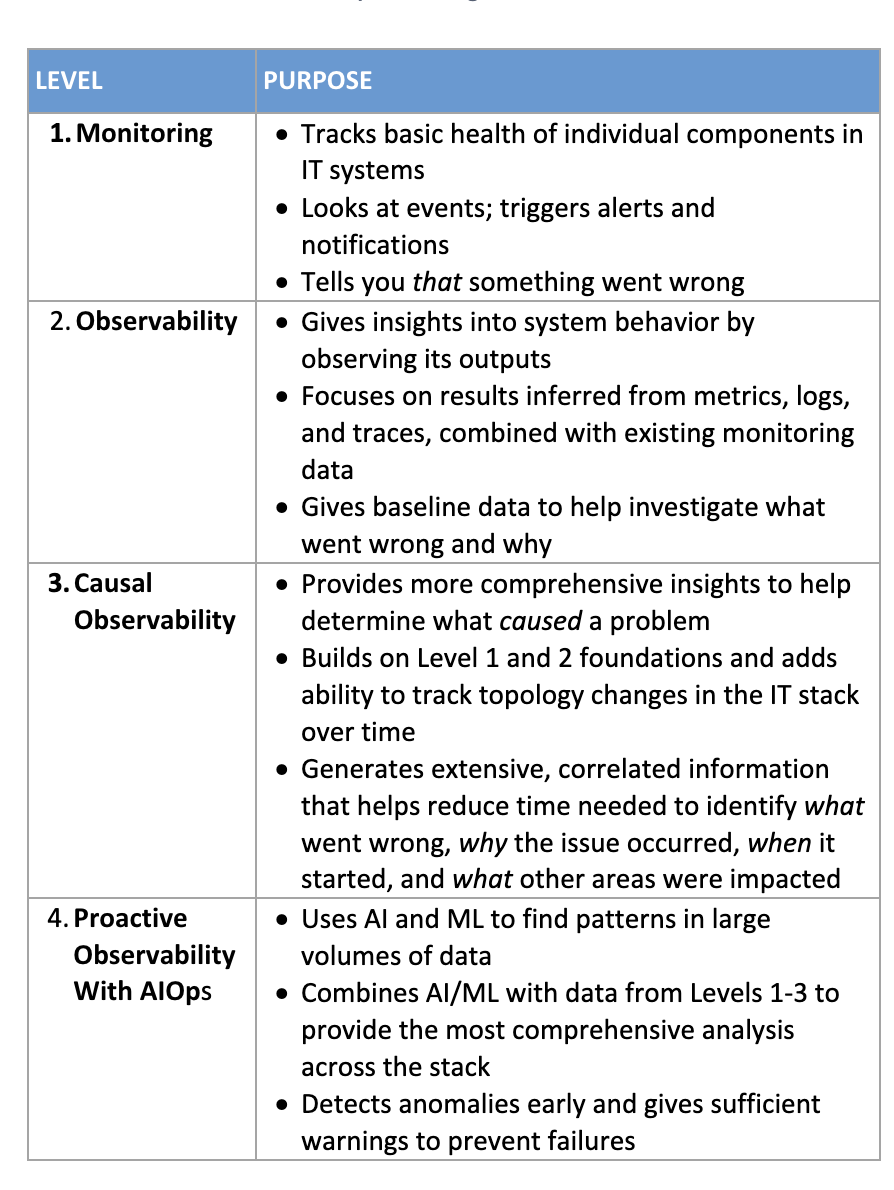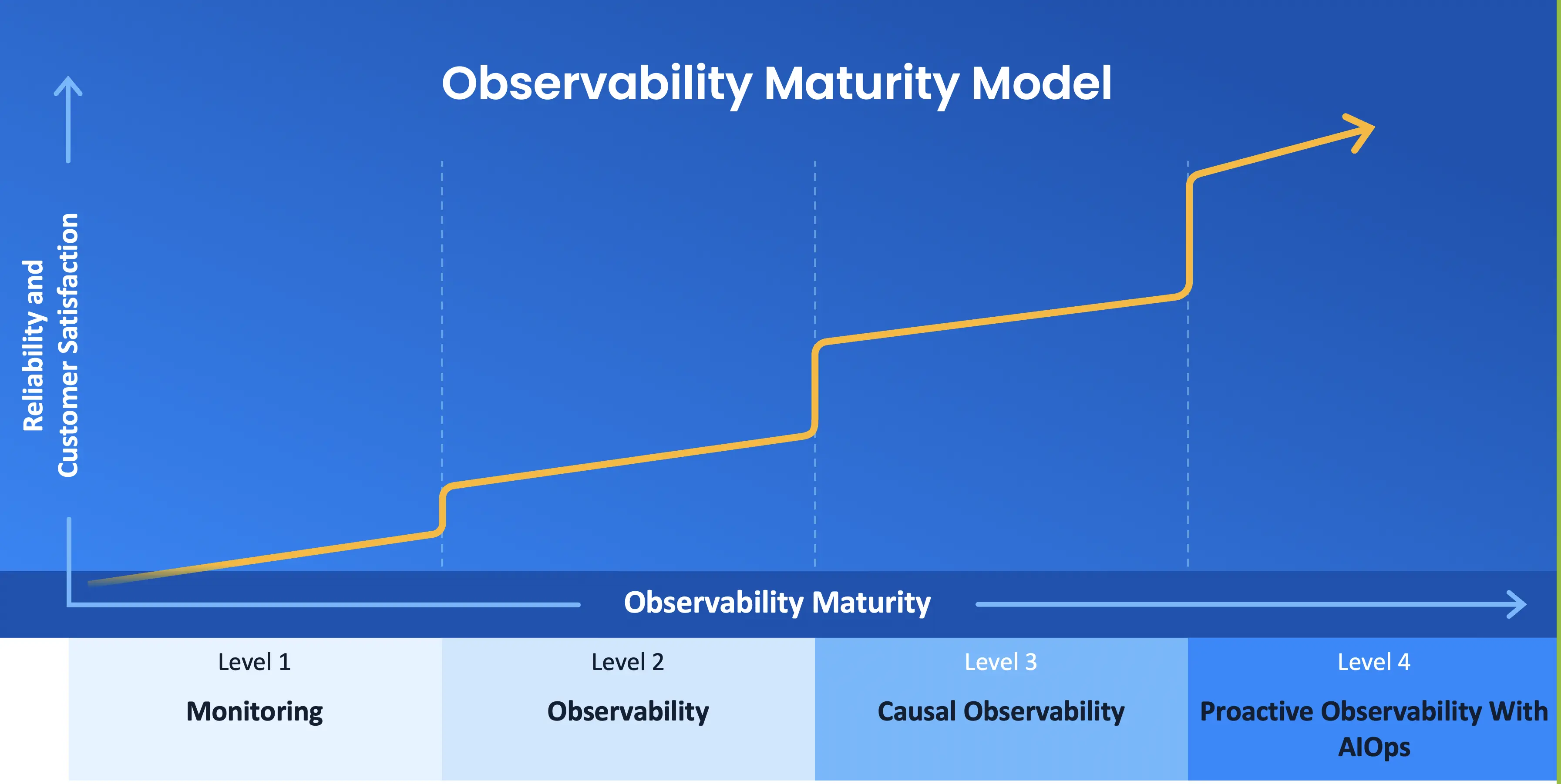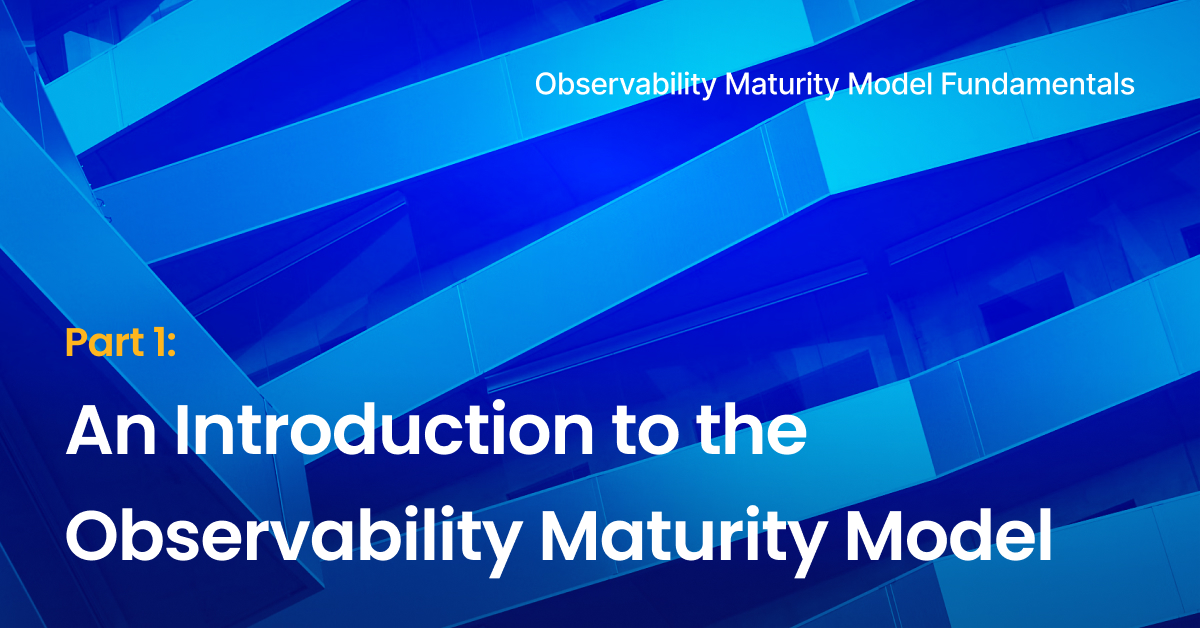Observability Maturity Model Fundamentals series, Part 1 of 6
This series of six blogs outlines the basics of the Observability Maturity Model. Use it to identify where you are on the observability path, understand the road ahead and provide guidance to help you find your way.
Skip to: Part 1 / Part 2 / Part 3 / Part 4 / Part 5 / Part 6
Where It All Began: Monitoring
Monitoring has been around for decades as a way for IT operations teams to gain insight into the availability and performance of their systems. To meet market demands, innovate faster, and better support business objectives, IT organizations require a deeper and more precise understanding of what is happening across their technology environments. Getting this insight is not easy, as today’s infrastructure and applications span multiple technologies and architectures and are more dynamic, distributed and modular in nature. Change is also a way of life in IT and research shows 76% of problems are caused by changes [1]. To maintain reliability in the face of all of these challenges, a company’s monitoring strategy must evolve to observability.
66% of MTTR is spent on identifying change that is causing the problem.
Most enterprises find it difficult to find the right monitoring strategy to manage their environments. Over 65% of the enterprise organizations have more than 10 monitoring tools, often running as siloed solutions to support specific needs for different teams.[3] This segregated structure limits the ability of SRE and IT operations teams to detect, diagnose and address performance issues. When issues occur, it is left to SRE, IT operations or even DevOps teams to find the root cause by combining teams, processes and tools, or by manually piecing together siloed data fragments. This traditional approach to monitoring is time consuming and does not provide the insights that improve business outcomes.
Observability Gives Enterprises Deeper Insights, Faster Root Cause Analysis and MTTR
And so the practice of observability has evolved, combining advances in monitoring with a more holistic approach that provides deeper insights. Whereas monitoring tracks the basic health of an IT system, observability gives deep insights into the behavior of that system. At higher levels of maturity, full-stack observability can provide insights that show exactly how issues affect customer experience and that help you find the root cause of issues quickly. You may even get sufficient early warnings that prevent failures from happening at all.
Stated simply, monitoring tells you that something went wrong, while observability can give you the insight you need to figure out why: what exactly caused the problem, when did the issue start and what else has been affected.
The Observability Maturity Model is based on research and years of conversations with enterprises across a variety of industries. Furthermore, the model has been validated with other practitioners, analysts and thought leaders. It defines four distinct stages in the evolution of observability (see Figure 1, below).

Each level of observability builds on the foundation established in previous levels to add capabilities in capturing, tracking and analyzing data. The new functionality enables deeper observability at each stage, resulting in improved IT reliability and customer satisfaction, as visualized in Figure 2 (below).

Although you can marginally improve results within a level by enhancing processes, most teams need to collect new types of data to advance to the next maturity level and realize greater benefits.
The Observability Maturity Model will help you:
Understand different types of data and how monitoring and observability practices can help your organization collect actionable information.
Understand the differences between monitoring, observability and AIOps.
Evaluate your organization’s current level of maturity.
Identify key challenges you will encounter as you progress and guide you to a higher level of maturity.
Use this model to learn clear steps you can take to improve observability in your organization so you can ultimately deliver more reliable and resilient applications to your customers.
References
1 “18 Key Areas Shaping IT Performance Markets in 2020, ” Digital Enterprise Journal (DEJ)
2 “2022 State of Managing IT Performance Study – Key Takeaways ,” Digital Enterprise Journal (DEJ)
3 Enterprise Management Associates (EMA) APM Tools Survey



